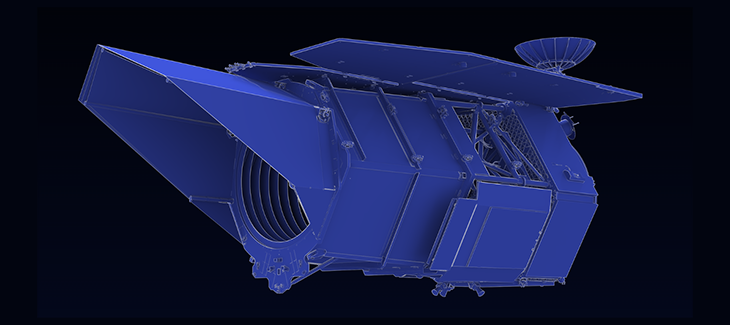The accelerating expansion of the Universe could be due to dark energy occupying 68% of space or due to potential violations of Einstein’s theory of relativity. The Roman telescope will test both theories.
What is the Roman Space Telescope, and what is its primary purpose?
The Rome Space Telescope is a space telescope under development by NASA. Its launch is scheduled for the mid-2020s, and NASA is considering it as an astrophysics mission. Its primary purpose is to rewind the universe, allowing us to observe distant galaxies or objects in space and look back in time. It also provides a wider view of the universe than previous telescopes such as Webb and Hubble, allowing astrophysicists to better understand the universe’s past. In addition, the Observatory for Inhabited Worlds, part of the Rome Space Telescope, is useful for searching for signs of extraterrestrial life. This requires an ultrastable telescope equipped with a powerful coronagraph to study dim objects near bright objects, such as rocky planets near stars. However, it should be noted that the Rome Space Telescope is mainly an observatory, and its primary purpose is not a mission to an exoplanet.
Credit: GSFC/NASA
What are the key features of a telescope?
Rome’s Nancy Grace Space Telescope (RST), formerly known as the Wide Field Infrared Survey Telescope (WFIRST), is set to become NASA’s next giant observatory. It was officially designated as a NASA mission on February 17, 2016, and is expected to launch in 2027. Nancy Grace RST will unravel the mysteries of dark energy and dark matter, search for and image exoplanets, and explore the evolution of galaxies. The telescope is named after NASA’s first chief astronomer, Nancy Grace Roman. The telescope will work in tandem with the Euclid mission, a space observatory led by the European Space Agency. Observations from the two missions will overlap, and RST will provide additional data for the Euclid mission. With the James Webb Space Telescope (JWST) already in space, RST will offer powerful new insights into the universe. Its design includes a 2.4-meter main mirror, three-axis control, and a large field of view of 1.6 square degrees. The telescope will also include wide-field infrared sensors, coronagraphs for exoplanets, and advanced wavefront monitoring systems.
Giant spaceship camera
A team of engineers and technicians from Ball Aerospace, one of the industry partners of NASA’s Nancy Grace Roman Space Telescope and NASA’s Goddard Space Flight Center in Greenbelt, Maryland, completed the assembly of the spacecraft’s giant camera. This modern instrument is called a Wide Field Instrument (WFI).
After completing the final integration, Ball Aerospace technicians transport the Nancy Grace Roman Space Telescope’s Wide Field Instrument (WFI) into Ball’s largest thermal vacuum chamber to begin environmental testing at a Ball facility in Boulder, Colorado. Credit: Ball Aerospace
WFI is a high-quality infrared camera for the Romanov Space Telescope, with a resolution comparable to Hubble but a 100 times larger field of view. One Roman image will contain the same detail as 100 Hubble images. It will allow us to explore exoplanets, study dark energy, and create detailed space maps.
Banner image: GSFC/NASA
Image credit:
https://roman.gsfc.nasa.gov
https://roman.gsfc.nasa.gov/
https://www.nasa.gov
